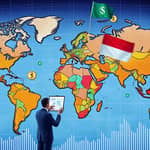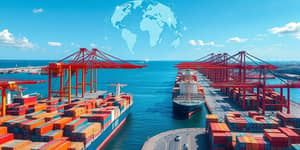
In an era defined by rapid change and deep uncertainty, the specter of policy risk looms larger than ever. From boardrooms in New York to rural markets in the Sahel, decision-makers face an increasingly volatile environment driven by geopolitical flashpoints, electoral upheaval, and the erosion of governance structures.
As global tensions intensify, businesses, investors, and communities must confront the reality that political instability is no longer a peripheral concern—it is at the very heart of strategic planning and risk management.
In 2025, the Coface Political Risk Index stands at a remarkable 40.2% above pre-Covid levels, reflecting widespread policy uncertainty across continents. No fewer than 112 out of 162 countries now face higher political and social risk than they did in early 2020, underscoring a sustained surge in volatility.
Last year marked a pivotal turning point: over 70 nations—accounting for half the world’s population and 55% of global GDP—held elections, fueling shifts in power and amplifying policy unpredictability. Meanwhile, according to the 2025 Global Peace Index, we are witnessing more active state-based conflicts than at any time since World War II. Seventeen countries recorded over 1,000 conflict-related deaths, and another 18 endured more than 100 fatalities.
Multiple forces collide to propel political risk to new heights. Understanding these drivers is essential for crafting effective responses.
When combined, these factors create a feedback loop of volatility: each shock undermines confidence in political systems, which in turn magnifies policy risk across sectors.
The eruption of instability is far from uniform. Some regions have become epicenters of risk, where localized tensions threaten broader economic and security landscapes.
In the Middle East, the Israel-Hamas conflict persists, with spillover risks involving Hezbollah and Iran. The resulting disruptions to oil and gas flows send shockwaves through global energy markets, amplifying inflationary pressures worldwide.
Africa’s Sahel zone and Horn of Africa are gripped by insurgencies, military juntas, and humanitarian crises. In Mali, the military junta’s heavy-handed rule has prompted the departure of UN peacekeepers, while Islamist insurgents exploit power vacuums. These dynamics exacerbate migration flows toward Europe, straining social and political cohesion.
Europe itself is not immune. France and Germany have seen far-right parties surge in recent elections, challenging EU and NATO unity. Austria braces for potential far-right governance, raising concerns over migration policies and social stability.
In the Asia-Pacific, tensions between the US and China over trade, Taiwan, and maritime boundaries threaten global supply chains. Disruptions to semiconductor and critical minerals production could spark significant fiscal and strategic shocks.
Understanding the scale of policy risk requires clarity on the data:
Armed conflicts in Ukraine and the Middle East have disrupted energy and food supply chains, contributing to persistent inflation and putting central banks in a bind. With policy rates still elevated compared to pre-pandemic levels, monetary authorities face the dual challenge of taming prices without stifling growth.
The rise in global growth headwinds and cost shocks is palpable: commodity prices swing with every new escalation, while consumer confidence remains fragile. High sovereign bond yields reflect heightened investor caution, and borrowing costs for emerging markets have climbed to multi-year highs.
Policy unpredictability also fuels capital flight. Investors demand risk premia for exposure to volatile jurisdictions, leading to tighter financial conditions and slower infrastructure development in regions that need it most.
Although the challenges appear daunting, organisations can take concrete steps to navigate this uncertain landscape. A proactive stance can turn risk into a source of competitive advantage.
By embracing these strategic risk management practices, stakeholders can maintain operational continuity and protect long-term value.
Most experts agree that the next decade will see a multipolar and fragmented global order. With just 8% of respondents in a recent World Economic Forum survey expecting a US-led rules-based system to endure, regional powers are poised to contest norms and carve out spheres of influence.
Policy paralysis and the so-called “polycrisis” phenomenon—where economic, health, and climate emergencies intertwine—threaten to erode public trust and complicate international cooperation. Governments may struggle to formulate coherent responses, heightening the risk of abrupt policy shifts.
Yet history shows that challenges can spur innovation. Cross-border coalitions, digital diplomacy, and public-private partnerships offer pathways to mitigate fragmentation. By investing in dialogue and capacity building, actors can foster more stable and predictable environments.
In a world beset by rising policy risk, leaders face a choice: retreat into defensive postures or embrace adaptive strategies that transform uncertainty into opportunity. By combining rigorous analysis with forward-looking resilience measures, organisations and societies can chart a course through turbulence.
Effective risk management is not merely about weathering storms—it is about shaping a more resilient future, where informed action and collaborative solutions yield stability and sustainable growth.
References













